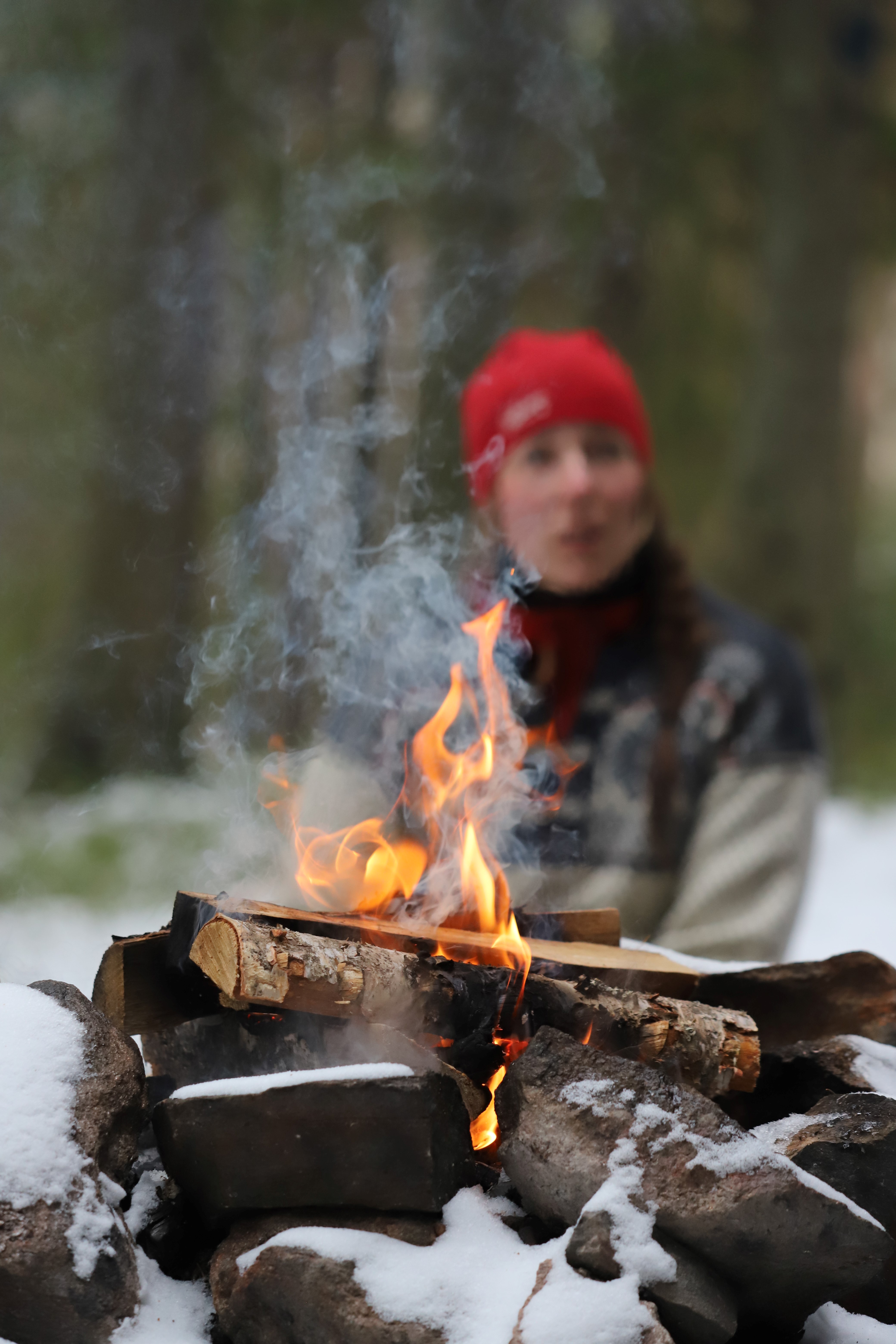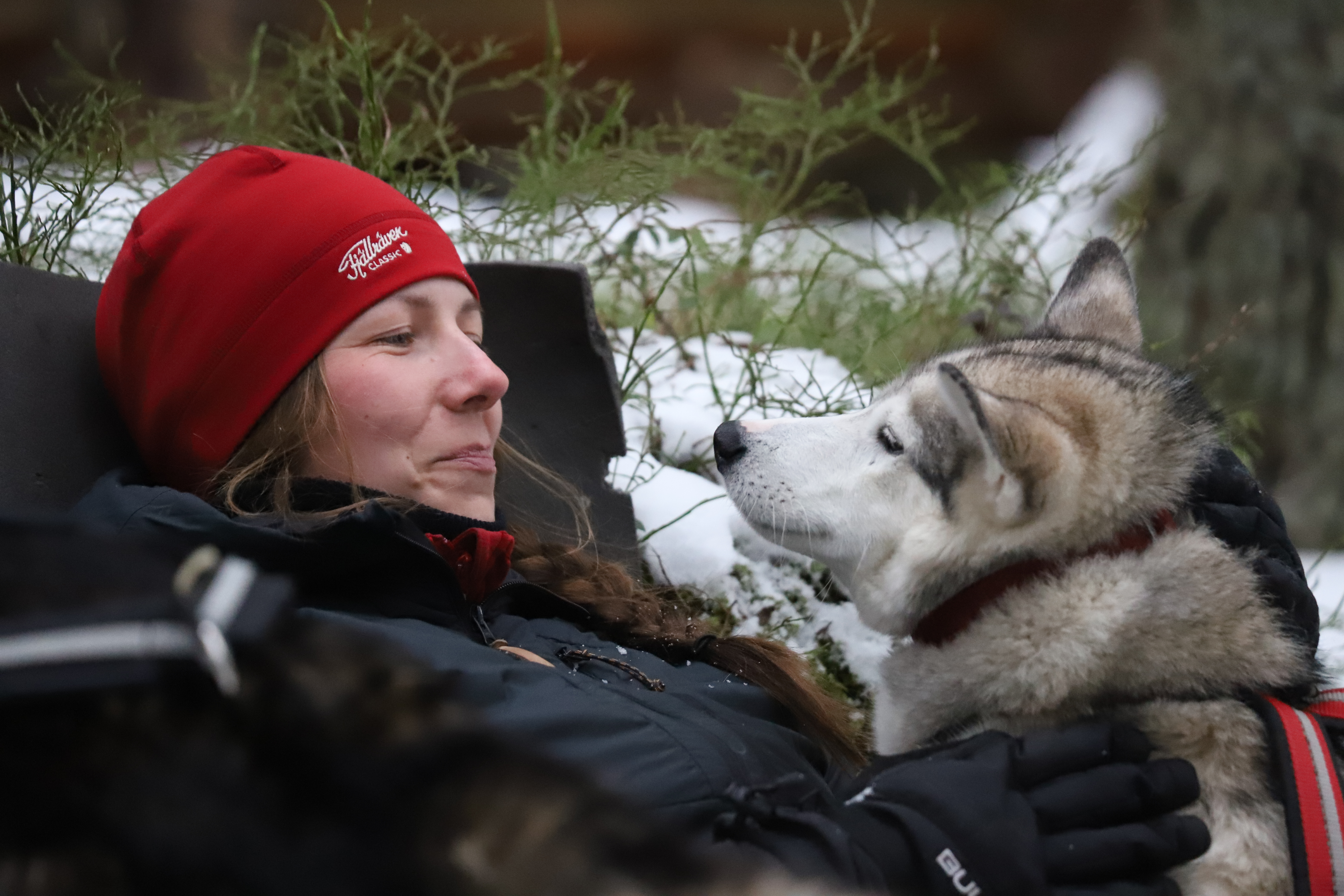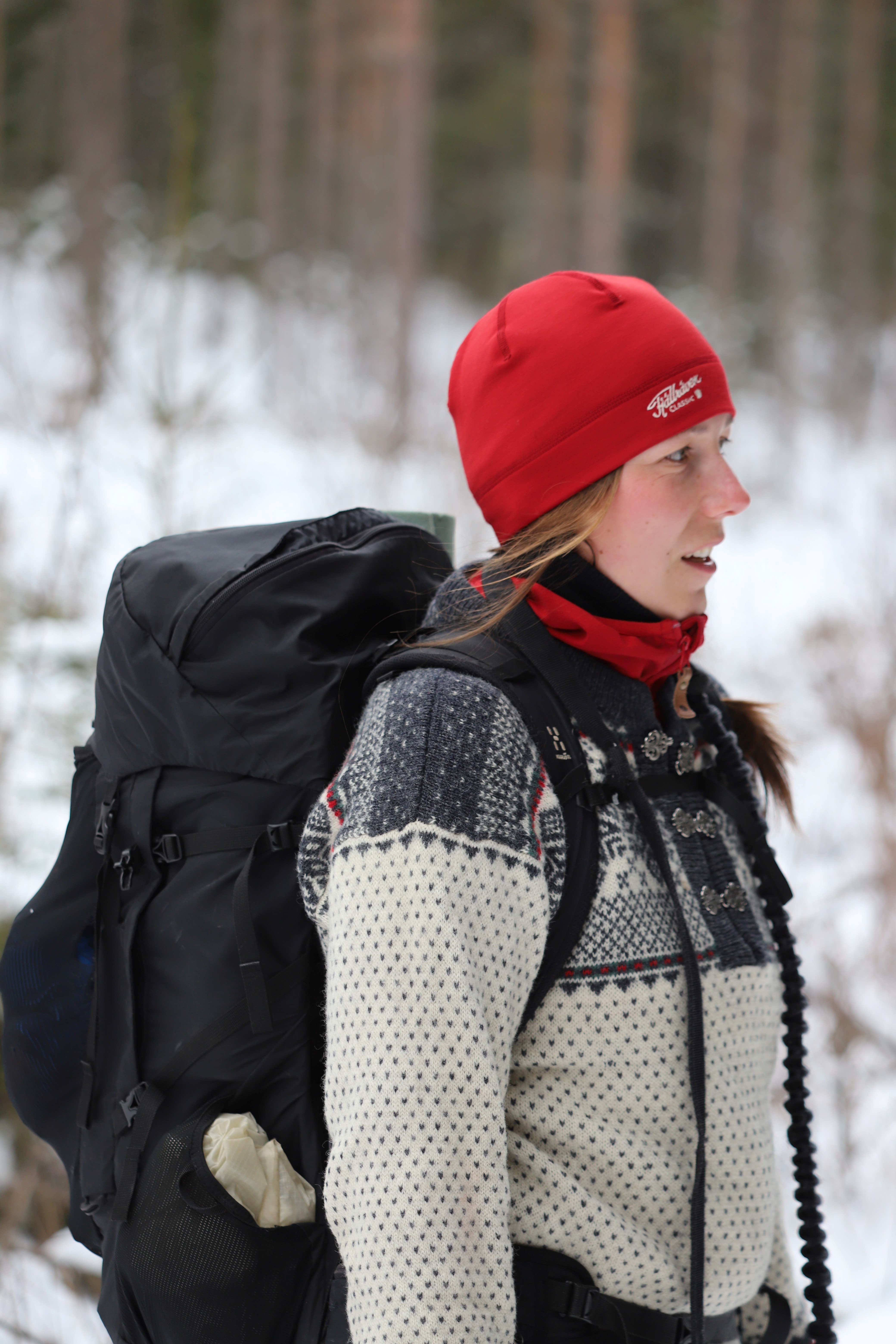Kompassen
It’s a snowy afternoon in February and we are sitting around a crackling fire with Ulrika Fellman at the shelter at Fjölkoträsk, right on the border between Pedersöre and Kronoby municipality in Ostrobothnia.

The surroundings are perfect for Ulrika; a wooded slope with a tarn below. While she makes up the fire, Ulrika talks about a similar place, a warm weekend in May before the midges appeared. Ulrika and her party spent the night at a shelter on a hill by a small tarn. There was a small fire pit down by the tarn, and they sat there long into the evening. It was warm and comfortable, no midges. “It felt like this was my living room. That feeling, to feel so at home, in an outdoor environment, it was really amazing”. In the morning the grouse were out and about – and in the tarn the frogs were in full voice.
Ulrika's interest in nature's health effects was piqued about ten years ago when she went on a wilderness guide training course at what was then the Kronoby folkhögskola, now Kvarnen. Before that she had no background in the outdoors at all. “When I went to Kronoby, I realised that this made me feel really great. I had never felt so good in my life as I did then – outdoors in nature, being physically active, being with other people who shared the same interest, being challenged and developing as a person. It was very intense - and it wasn’t just this contact with nature, or getting to be in nature. I realised that I feel good, I want to do more, and I want others to have this too.” After the wilderness guide training course was over, Ulrika knew that she wanted to continue her studies, to have more to fall back on, and took a degree in mental well-being in Skövde. After that, she found SLU’s Masters Programme in Environmental Psychology and immediately knew that the programme was perfect for her.

Fjölkoträsket, where we are sitting by the shelter, is not very far from the Uterleden and the river Ese. Over the years, Ulrika has often taken groups kayaking on the Ese. We talk about telling stories about the places you go with customers, remembering to ask the older generation to tell their stories and remembering to pass them on to the younger generations. Along the Ese River there are old hay barns, right by the water – with the opening towards the water and a meadow behind. "In winter, it was easier to travel across the ice, when it came time to pick up hay with horse and sledge" says Ulrika. Without this knowledge, it might seem strange that the barns have an opening to the water. There is also a farmstead along the river Ese, called Lamabacka. The river Ese is a river full of life, there are even freshwater pearl mussels, and the two brothers who lived at Lamabacka still hold of the national crayfishing record. The catch was sold to the fine restaurants in Helsinki and Stockholm.

Finally, what are Ulrika's tips for anyone thinking of setting up a business here? Firstly, start it off in tandem with the job you already have. Secondly, take a course: how do I reach out to the target group, what is the target group and what does the target group want? “What I would like to give to a particular target group, the target group may not be interested in – or need, or be able to afford.” Thirdly, you have to dare to try and not be afraid of failure, and not have too high expectations of yourself at the beginning: “When you do something for the first time, if it's going hiking, for example, you can't expect everything to go perfectly and exactly as you intended. You learn something from every assignment – things you can take with you”
/Text & Photo: Sara Kåll-Fröjdö & Maria Hofman-Bergholm, Yrkeshögskolan Centria, februari 2020
You can read more about our entire visit to Ulrika and Kompassen here (in Swedish)